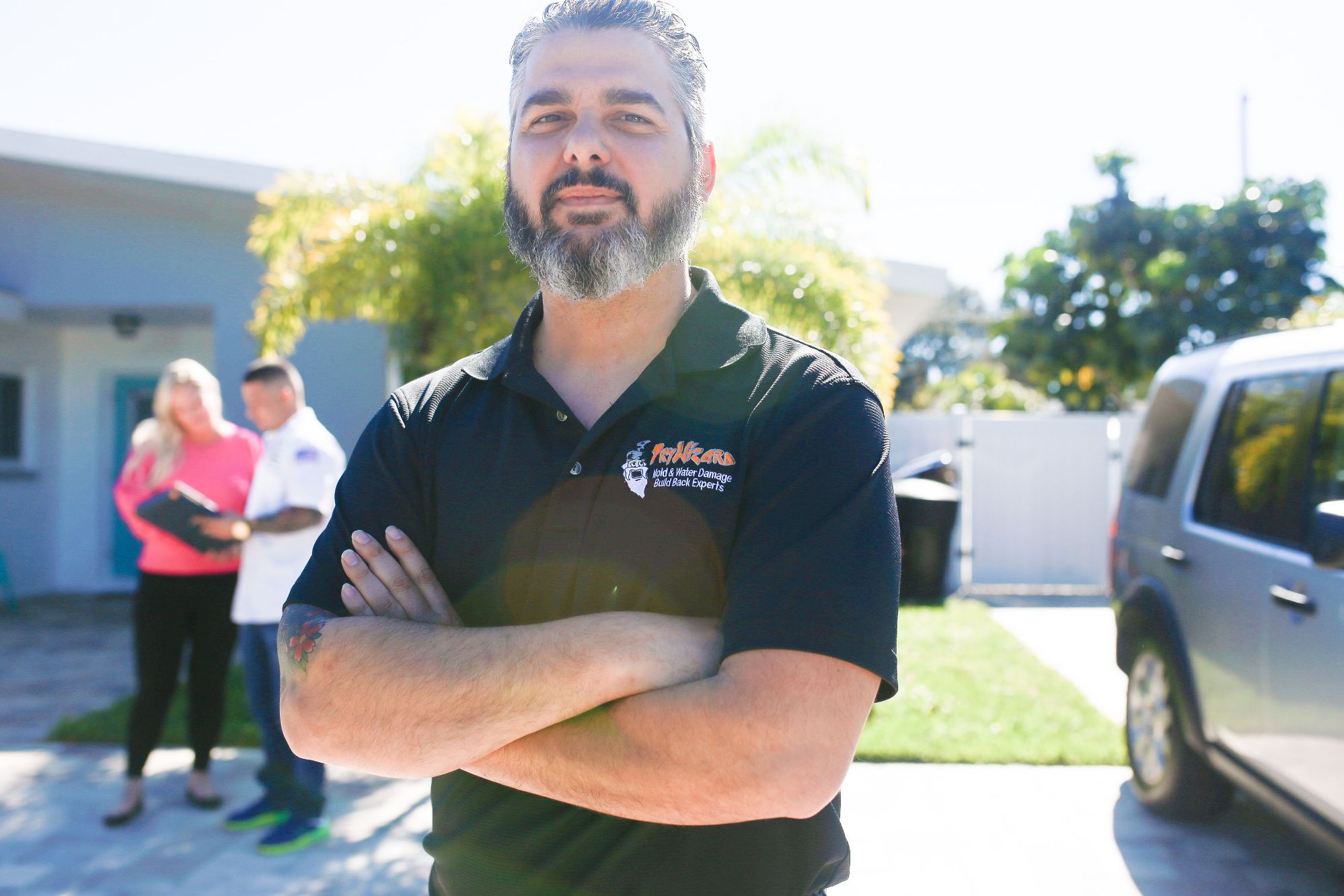
Step 1: Understand the Mold Remediation Industry
Before diving into your new business, it’s crucial to understand the mold remediation industry and the services you’ll offer. Mold remediation involves identifying, containing, and removing mold from homes, commercial buildings, and other structures. Mold can grow as a result of water damage, leaks, or high humidity, and removing it properly requires specialized knowledge and equipment. The industry is heavily regulated, especially when it comes to ensuring safety, so you’ll need to stay updated on legal and safety requirements. For instance, the Environmental Protection Agency (EPA) offers guidelines for mold remediation, which you should be familiar with to maintain compliance.
Consider whether your services will focus exclusively on mold remediation or whether you will also offer related services like water damage restoration, air quality testing, or basement waterproofing. Broadening your service offerings can provide additional revenue streams and attract a wider customer base. To get a sense of the competition, research local businesses that provide similar services and look for gaps in the market where your company can stand out.
Step 2: Get Certified and Licensed
Obtaining the right certifications is essential to running a credible and legally compliant mold remediation business. In many states, mold remediation is a licensed trade, which means you’ll need to meet specific requirements before you can legally operate. The most recognized certification in the industry comes from the Institute of Inspection Cleaning and Restoration Certification (IICRC). The IICRC offers courses in mold remediation that will teach you how to assess mold damage, handle the removal process, and ensure that your services meet industry standards.
Depending on your location, you may also need to secure a contractor’s license and liability insurance. Licensing requirements vary by state, so be sure to check with your local regulatory board to find out what’s needed. Additionally, consider getting certified for asbestos and lead paint removal, which often go hand-in-hand with mold remediation. This will not only expand your services but also enhance your credibility and marketability.

Step 3: Create a Business Plan
Once you have a clear understanding of the mold remediation industry and the necessary certifications, it’s time to create a business plan. Your business plan will serve as a roadmap for your company’s growth and include details such as your services, target market, marketing strategy, and financial projections. A solid business plan is also essential if you need to secure financing from banks or investors.
When writing your business plan, make sure to include the following key sections:
- Executive Summary: An overview of your business, including its mission, goals, and key services.
- Market Analysis: A detailed look at your target market, industry trends, and competitive landscape. This section should include demographic data for your area and insights on the demand for mold remediation services.
- Marketing Strategy: A breakdown of how you plan to attract customers, including online marketing, networking, and referral programs. Include strategies for leveraging Google My Business to improve local search visibility.
- Operational Plan: Details on the daily operations of your business, including equipment needs, staffing, and service delivery processes.
- Financial Plan: Financial projections for your first year, including estimated startup costs, operating expenses, and revenue forecasts.
By having a detailed business plan, you’ll be better prepared to manage your resources and make informed decisions as your business grows.
Step 4: Purchase Equipment and Supplies

Starting a mold remediation business requires an investment in specialized equipment and supplies. At a minimum, you’ll need the following:
- Personal protective equipment (PPE) such as respirators, gloves, and protective suits to ensure the safety of your team.
- HEPA air scrubbers to remove airborne mold spores during remediation.
- Dehumidifiers to reduce moisture and prevent future mold growth.
- Negative air machines to control air pressure and contain mold spores during removal.
- Moisture meters and thermal imaging cameras for detecting water damage and hidden mold growth.
- Cleaning agents and antimicrobial solutions to disinfect contaminated areas.
Make sure to research and invest in high-quality equipment that will last. Cheap tools may save you money upfront, but they could end up costing you more in the long run due to inefficiency or frequent breakdowns. When purchasing equipment, consider reaching out to professional supplier networks or joining industry associations like the Restoration Industry Association (RIA) for potential discounts and insights into the best brands.
Step 5: Develop a Marketing Strategy
Once your business is operational, the next step is to market your services effectively. A strong marketing strategy is key to building a successful mold remediation business. Since mold remediation is often an urgent need, most customers will search online for local businesses, making digital marketing essential.
1. Optimize for Local SEO
Local SEO is crucial for any home service business, especially mold remediation. Ensure your business is listed on Google My Business and other local directories, and optimize your website for search terms like “mold remediation near me” and “mold removal services in [city].” Focus on creating content that answers common questions about mold, such as how to identify mold in the home or how to prevent mold after a flood. By producing valuable content, you can improve your rankings in local search results and attract more traffic to your site.
2. Leverage Social Media and Paid Ads
Social media platforms like Facebook and Instagram offer opportunities to engage with potential customers and showcase your expertise. Share before-and-after photos of remediation projects, customer testimonials, and educational posts about mold prevention. Additionally, consider investing in paid advertising through Google Ads or Facebook Ads to target homeowners and businesses in your service area who may be searching for mold removal services.
3. Build Relationships With Local Businesses

Networking is another effective way to grow your business. Build relationships with local real estate agents, home inspectors, insurance agents, and contractors who can refer clients to you. Joining your local chamber of commerce or trade associations can help you establish these connections. Also, consider offering a referral program to incentivize satisfied customers to recommend your services to friends and family.
Step 6: Hire and Train Staff
As your business grows, you may need to hire additional staff to handle the workload. When hiring, look for individuals with experience in mold remediation, water damage restoration, or construction. However, even if a candidate has experience, it’s essential to provide ongoing training to ensure they are familiar with your company’s protocols and safety procedures.
Consider offering training through the IICRC or other professional organizations to keep your staff up-to-date on the latest remediation techniques and safety regulations. Proper training will not only improve the quality of your services but also reduce liability by ensuring that your team follows industry best practices.
Step 7: Build Relationships With Insurance Companies

Many homeowners will rely on their insurance to cover the cost of mold remediation, especially after events like floods or water damage. Building relationships with insurance companies can help streamline the claims process and lead to more referrals. Reach out to local insurance agents and adjusters to introduce your business and explain how you can assist their clients with mold removal services.
Additionally, make sure you’re familiar with the documentation and processes involved in filing insurance claims. Being knowledgeable and easy to work with will improve your reputation with both clients and insurance providers.
FAQ
| Question | Answer |
|---|---|
| Do I need a license to start a mold remediation business? | Yes, depending on your location, you may need a contractor’s license and specific mold remediation certifications, such as those from the IICRC. Always check with local regulatory authorities to ensure compliance. |
| What equipment do I need to start a mold remediation business? | You’ll need equipment like HEPA air scrubbers, dehumidifiers, negative air machines, and protective gear. Investing in high-quality tools is essential for effective mold removal. |
| How much does it cost to start a mold remediation business? | The startup cost varies, but you can expect to invest between $10,000 and $50,000 in equipment, certifications, insurance, and marketing. The exact cost will depend on the scope of your services and location. |
| Can I run a mold remediation business from home? | Yes, many mold remediation businesses operate from home, especially in the early stages. However, you’ll need a storage space for equipment and a reliable way to transport it to job sites. |
| How do I market my mold remediation business? | Focus on local SEO, social media, and networking with real estate agents and insurance companies. Offering valuable content on your website and running targeted ads can also help attract customers. |
If you’re ready to start your mold remediation business or need more information on remediation services, contact Citywide Mold Mitigation for expert advice and assistance.

